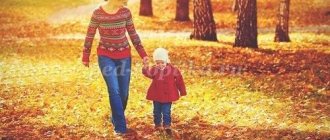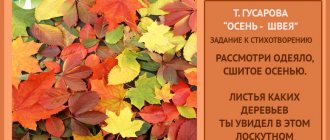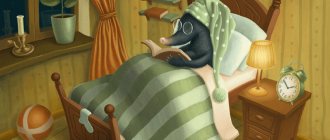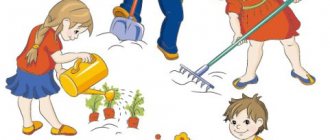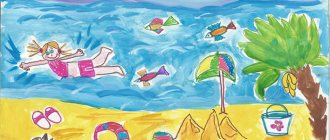How to spend autumn without colds?
So unexpectedly, after the warmth, autumn came with cool weather and rain. Consequently, the first colds in children of all ages are not far off.
What can you do to prevent your child from catching a cold in the autumn? How to prevent a simple runny nose and ARVI? How to live this autumn period with joy?
Only a set of measures, that is, a variety of actions in different areas, gives a guaranteed result.
Many parents are tormented by the same question: “What causes colds most often in a child?”, “What to do? Why did you get sick, that’s why you need to be treated?” Should you go for a walk with your children in any weather?”
Walking is a child being outside, walking in a park or square, on a bicycle, on roller skates. Let these not be long walks, but mandatory and systematic. Please keep in mind that shopping with your child contributes to the opposite effect, that is, the acquisition of airborne infections.
By admiring the beauty of autumn nature, you contribute to the development of the child’s movements and good metabolism, as well as successful adaptation to a damp and humid climate.
Autumn vitamin supplementation for children. Start right now, every morning and evening, drink tea with lemon and eat it with sugar and zest. As people say, the example of parents is contagious. Well, instill good and healthy habits in your child before a viral infection does! Teach your child to garlic. Garlic does not have to be eaten in its pure form. You can simply chop fresh garlic finely and sprinkle it into a bowl of soup. Buy rosehip syrup rich in vitamins (especially vitamin C) at the pharmacy. Add it to tea or give it to your child as a stand-alone drink, diluting it in warm water. But remember, children with allergies should take with caution! And most importantly, instill in your children culturally hygienic skills and remind them that: in kindergarten, on the street, in public places, you need to cover your nose and mouth when you are near people who sneeze and cough. Before eating, be sure to wash your hands and blow your nose. Use only your personal belongings (handkerchief, fork, spoon). Because infection can enter the child’s body through other people’s things.
Think over your child's wardrobe. Did you know that one of the possible causes of colds in the autumn is that the child’s clothes do not match the weather outside. For some reason, some parents overheat their child, while others dress them very lightly. To help your child avoid colds, rule out possible causes. Dress your child according to the season, no warmer or lighter than necessary.
Basic requirements for a child’s clothing:
- Good footwear appropriate for the weather is key to your child's health. Feet should be dry and warm.
- Headdress or hood on a jacket. We always keep our heads warm.
Difficult? No! The best protection against colds in the fall is its comprehensive prevention. Be healthy!
Consultation for parents “Welcome autumn without a cold”
Consultation for parents
“We welcome autumn without a cold”
So unexpectedly, after the incredible heat, the “Golden” autumn came with cool weather and rains. Consequently, the first colds in children.
What can you do to prevent your child from catching a cold in the autumn?
Yes, in general, there is no need to do anything new. Just sit down, take a piece of paper and a pen and make a preventive action plan.
Prevention plan for your child:
1. Talk to all family members about the need for preventive measures at home. The best example for a child is the example of parents!
2. Think about what interesting game the whole family can play with the goal of “being healthy.” Why should this be done? When a child is not interested, he will either sabotage or reluctantly perform “useful” procedures.
3. Walks in any weather. Let them be short in time, but mandatory and systematic. By admiring the beauty of autumn nature, you contribute to the development of the child’s movements and good metabolism, as well as successful adaptation to a damp and humid climate.
4. Autumn vitamin supplementation for children. Go to the pharmacy, buy and take a course of children's vitamins. Your doctor will help you choose such a complex individually for your child. Use the child’s wishes to eat something “tasty and healthy.” And at the same time, it’s also a good habit to instill in your child. How to achieve this? Here is a sample diet of “tasty and healthy habits”:
Teach your child to garlic. Garlic does not have to be eaten in its pure form. You can simply chop fresh garlic finely and sprinkle it into a bowl of soup.
Buy rosehip syrup rich in vitamins (especially vitamin C) at the pharmacy. Add it to tea or give it to your child as a stand-alone drink, diluting it in warm water.
5. Talk with your child about the rules of maintaining health:
In public places, you should cover your nose and mouth when you are near people who are sneezing or coughing.
Wash your hands and blow your nose before eating.
Use only your personal belongings (handkerchief, fork, spoon). Because infection can enter the child’s body through other people’s things.
6.Think over your child’s wardrobe. Did you know that one of the possible causes of colds in the autumn is that the child’s clothes do not match the weather outside. For some reason, some parents overheat their child, while others dress them carelessly. To help your child avoid colds, rule out possible causes. Dress your child according to the season, no warmer or lighter than necessary.
Consultations for parents on the topic: “Autumn”consultation (junior group) on the topic
Autumn
Consultations for educators on the topic: “Seasons.”
SEASONS. SEPTEMBER At first imperceptibly, furtively, and then declaring itself louder and louder, autumn crept up. The crowns of the aspens have turned red, the linden and birch trees have turned golden, and the lingering rains are falling more and more often. Migratory birds are gathering in flocks - it's time, it's time to go to warmer climes! Thrifty four-legged animals are in a hurry to gather supplies - winter is just around the corner. The trees are shedding their last leaves. The sky is increasingly covered with low, shaggy clouds, from which snow is about to fall, cooling the ground air.
And here it is September! Slowing down its rise, the sun shines with a cold radiance, and its ray in the mirror trembles like unsteady waters, like unfaithful gold.
September has arrived. The days shortened, drawing closer to the nights, the fogs thickened, shrouding the lowlands in the evenings, and cobwebs sparkled under the slanting rays of the sun, drawn by the breeze. A fine summer afternoon is ardent, hot, captivating. They thought that the drier and warmer September remained, the later winter would come. The Old Russian name for September “ruen” was associated with the yellow color of autumn, “howler” with rain and bad weather, “gloom” with the fading of sunlight and early twilight. Indian summer is the best time of autumn. According to old reports, it lasts only a week, from September 14 to 21. Who doesn’t like warmth, even if it’s farewell? How wonderful these days are! The sun is hot from above, illuminating the azure vault of the sky, the quiet air is transparent, dry, it seems that summer has accidentally returned. If the first day of Indian summer is clear, then autumn will be warm. Indian summer is stormy - autumn is dry. September 28 - “flying goose”. Dark, cold evenings and pre-dawn freshness cool the air and the earth. The last days of pensive September are announced by the calls of departing geese and cranes.
In the original autumn there is a short but wonderful time - The whole day is as if it were crystal, And the evenings are radiant... The air is empty, the birds are no longer heard, But the first winter storms are still far away, And clear and warm azure is pouring onto the resting field...
Apple trees produce ripe fruits. Tansy is still full of charm: the yellow inflorescences look like the heads of petalless daisies. Field work is almost complete. Now there is time to talk and reflect.
*A lot of acorns on an oak tree in September - for a fierce winter. A lot of shade in Indian summer - for a clear autumn and a cold winter. *September sees off the red summer, welcomes the golden autumn. *The drier and warmer September stays, the later winter will come. *Although the leaves have turned yellow, they are falling slightly - frosts will not begin soon .*Rare clouds—it will be clear and cold.*Cirrus clouds are harbingers of close flights of bird flocks.*We started collecting rose hips—autumn has arrived.*Thick warm fogs warn of the beginning of mushroom season.*Thunder in September foreshadows a warm autumn.*September without fruits does not happen. *September is the evening of the year.
ADVICE FOR PARENTS In autumn, children get acquainted with autumn natural phenomena. Children watch the leaves of trees and bushes color. On sunny, warm days after the first frost, the leaves turn crimson, orange, yellow, and golden colors, which gives the leaves an elegant and beautiful appearance. Tip: tell the children why the leaves turn yellow. After the first frost, when the wind blows, the leaves are easily separated from the branch. Massive leaf fall begins and the ground is covered with a layer of dry, rustling leaves. Tip: tell the children why the leaves fall and become dry. What to read to children? *F. Tyutchev “There is in the primordial autumn...” *V. Stepanov “Sparrow” *K. Balmont “Autumn” *A. Maikov “Autumn Leaves” *A. Barto “A Joke about Shurochka” *O. Ivanenko “Good night” *I. Sokolov–Mikitov “Forest in Autumn” *V. Bianki “Forest Houses” *G-H. Andersen "Chamomile", "Little Ida's Flowers"
SEASONS OF OCTOBER Through the golden valley You are leaving, silent and wild. A crane's receding cry is drawn in the sky. Freezes, it seems at the zenith. A sad voice, a long sound. The triumphant spider endlessly pulls the threads. For elegant clothes, Autumn gave the sun Flighted hopes of Inspirational warmth.
The beginning of October, as a rule, begins with complete variegation of trees and massive leaf fall. A sharp change in weather is accompanied by increased leaf fall. The death of herbaceous vegetation is observed everywhere. The days are still surprisingly fine and dry. At noon, the sun peeks through the cloud banks, spreading a brief farewell warmth. The bronze blizzard of leaf fall rustles. The golden gusts of autumn transform the forest so that the cold does not take it by surprise. Autumn. With sadness and anxiety he rustles a fallen leaf. Among the brothers, October is the most elegant month, the most picturesque, especially at the beginning. If in October a leaf from a birch or oak falls uncleanly, expect a harsh winter. And here is the famous Intercession, October 14th. “It’s autumn before Pokrov, and after lunch it’s winter-winter.” If snow falls on Pokrov, then the winter will be snowy. People call October the muddy month, the winter season.
Cold winds tirelessly insist that stormy days are approaching, dying early. After all, the incessant rains will soon begin. The days rolled by one shorter. October still delights with dry, fine days and bright green grass. In the mornings, the puddles are glazed with ice, and heavy dew does not leave the cold meadow for a long time. The waters of ponds and rivers are purified. In the meadows, popovka daisies and squat white chickweeds have not yet faded, and near the rivers, gravilat and creeping tenacious have bloomed a second time. After the golden autumn that embraces the first half of October, pre-winter slush, rain and snow await. Winter is not far away already.
October has already arrived - the grove is already shaking off the last leaves from its naked branches; The autumn chill has breathed in - the road is freezing. The stream is still murmuring behind the mill, But the pond has already frozen; my neighbor hurries to the departing fields with his eagerness, and the winter suffers from mad fun, and the barking of dogs awakens the sleeping oak groves.
After the golden autumn that embraces the first half of October, pre-winter slush, rain and snow await. Winter is not far away already.
Popular wisdom says
*If there is a lot of rowan in the forest, autumn is rainy, if there is little, it is dry. *In October there is thunder - winter is snowless, short and mild. *October is the month of close powder. *From what date in October the weather will be good, from that date spring will open in April. *Autumn frost - to dry, sunny weather. *Until the cherry leaves fall cleanly, no matter how much snow falls, the thaw will drive it away. *In October, say goodbye to the sun, get closer to the stove. The face of nature is becoming increasingly gloomy: The vegetable gardens have turned black, the forests are becoming bare, the bird voices are falling silent, the bear has fallen into hibernation. What month did he come to us? (October)
Our Queen, Autumn, We will ask you together: Tell your children your secret, Who is your second servant? (October)
ADVICE FOR PARENTS
The gifts of nature are multifaceted, numerous and beautiful. Children take great pleasure in collecting fallen leaves, so generously painted in bright colors in autumn; cones and acorns thrown from trees by wind currents or by restless inhabitants of forests and parks. Children use bright natural materials not only in creative activities, but also in play. By going through and examining each pebble, leaf, cone, children accumulate impressions and knowledge about their properties and qualities: smooth - rough, voluminous - flat, large - small, strong - fragile, etc. In addition, children develop fine motor skills fingers, which contributes to the best positioning of the hand for writing, the development of correct sound pronunciation, and coherent speech. Invite your children to play with natural materials at home. Games: * sort through the seeds of maple and ash * sort out the natural material by size and quality * trace the leaves along the outline and color them * draw an autumn pattern with an imprint of the leaves * complete the picture from plasticine with small details * fold from natural material portrait of your favorite fairy-tale hero
Advice: parents need to allocate a place at home where they can conveniently and easily place natural material for working with it and playing activities.
SEASONS. NOVEMBER November is the coldest month and is characterized as pre-winter. A temporary but fairly stable cover appears. The landscape takes on autumn-winter features. Reservoirs are covered with thin young ice. The leaf fall of the trees ends and the time of active plant life begins to fade.
It's a sad time! the charm of my eyes! Your farewell beauty is pleasant to me - I love the lush decay of nature, the forests dressed in crimson and gold, in their canopies the sound of the wind and fresh breath, and the skies covered with wavy darkness, and the rare ray of sun, and the first frosts, and the distant threats of gray winter. It's getting cold. The prickly morning performance seems to warn that severe frosts on the ground and in the air have entered into force. The golden grove has faded, all the beauty below is decaying. The appearance of November is colorful. Black path, snow. The purpose of November is to connect deep autumn with persistent winter. The November period is called pre-winter, when wildlife is finally preparing for the harsh tests of the long cold season. November 12 - Zinovia - the titmouse holiday. The feathered guests of winter flock: bullfinches, goldfinches, waxwings...November 14 - welcoming winter, autumn funeral.
An unprepossessing November day. The sun will peek out for a short time and disappear: the sky is covered in a leaden, cloudy pillowcase. The days are decreasing, and the nights are getting longer and longer.
The Christmas tree has become more noticeable in the forest, It is tidied up before dark and is empty. And bare as a broom, Clogged with dirt by the dirt road, Blown with ash frost, The vine bush is trembling and whistling.
When the sun glimpses fleetingly, the September warmth is remembered, but the sparkling ray is obscured by clouds and everything around fades and fades... Damp, soft, grayish-pale snow stained the ground, adorned the deserted branches of the trees. Winter is getting stronger and stronger, sending cold and snow. But cold weather gives way to warm weather, snow turns to rain.
*In November, winter fights with autumn. *In November, it can rain in the morning, and by the evening the snow can lie in drifts. *Mosquitoes in November - there will be a mild winter. *November is an off-road: either snow, then mud, then mud, then snow - neither the wheel nor the runner can move. *November is the grandson of September, the son of October, the dear father of winter.
And yet winter takes precedence over autumn. The luminous ray of the sun noticeably weakens, and winter comes from the northeast, increasingly showering the tired nature with snow.
Summer has thrown off the green caftan, The larks have whistled to their hearts' content, Autumn, dressed in a yellow fur coat, Walked through the forests with a broom, So that a zealous housewife could enter into the snowy forest towers A dapper woman in a white flyaway - Russian ruddy winter!
ADVICE FOR PARENTS Small experiments and entertainment that can easily be done at home or away will help you pass the boring, rainy days of November. They will not require serious preparation, but will bring a lot of joy. “Guessing Game” The children have various pairs of objects in front of them. Children look at them and determine how they are similar and how they differ. (Similar in size, different in weight.) Take the objects in their hands and check the difference in weight. Next, children are asked to determine, with their eyes closed, by the sound of an object falling on the floor whether it is light or heavy. (A heavy object has a louder impact sound.) They also determine whether an object is light or heavy by the sound of an object falling into the water. (The splash is stronger from a heavy object.) Then they throw the objects into a basin of sand and determine whether the object was carried by the depression left after the fall in the sand. (A heavy object makes a larger depression in the sand.)
Reading to children
*N. Abramov “Autumn Tale” *A. Lukyanova “The Tale of the Beginning of Winter” *L Sokolova “The Tale of How the Fox Learned about Autumn” *I. Sokolov–Mikitov “Stories about Animals” *A. Pleshcheev “Autumn Song” *V. Berestov “Lessons from leaf fall” *A. Pushkin “Autumn” *I. Bunin “Falling Leaves”
